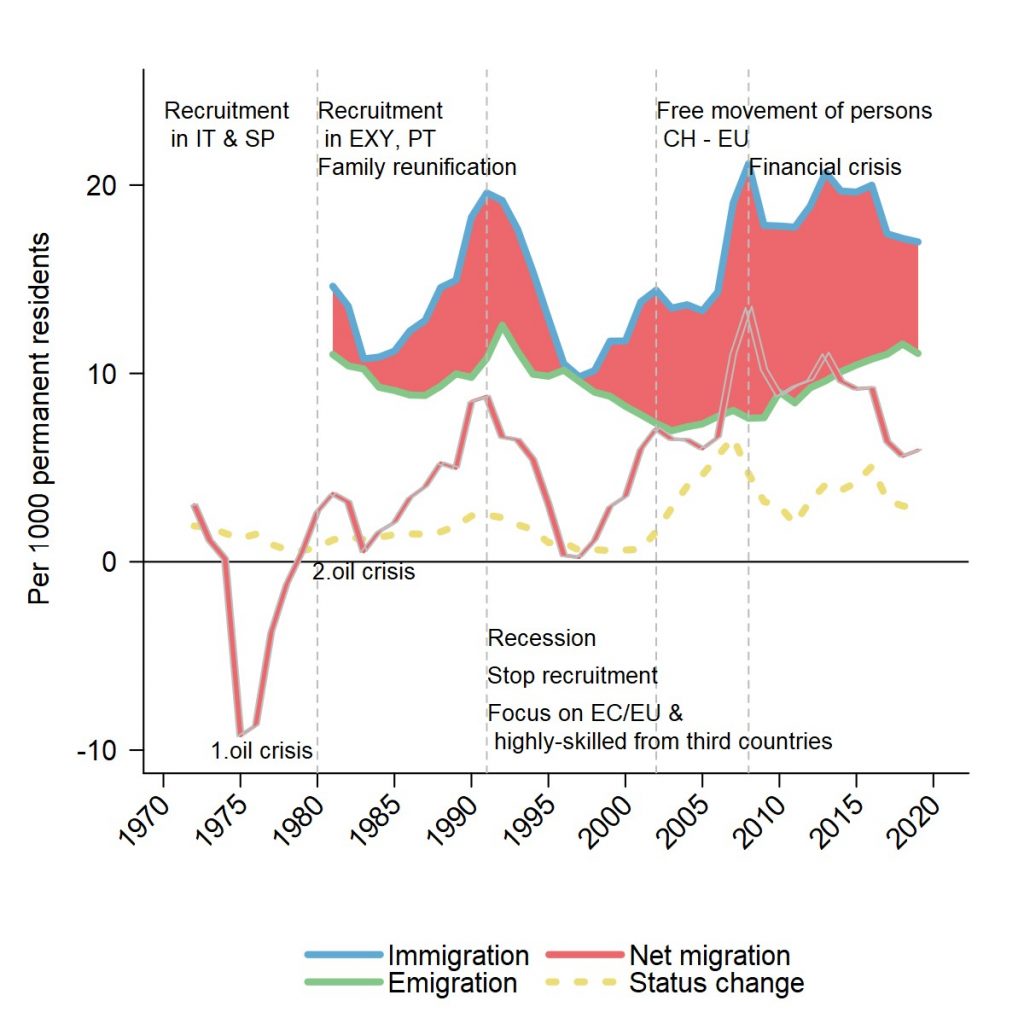International migration is the most important component of population growth in Switzerland. We describe the continuities and changes in the intensity, geography, sociodemographic profile and international mobility of post-WWII immigration to Switzerland. After an internationalization and feminization of migration in the 1980s-1990s, the new century was marked by peak inflows predominantly from neighboring countries, mainly of working aged men who stay only a couple of years in Switzerland – similarly to the patterns in the 1960s. However, immigrants are now higher skilled, older and more often childless on arrival, and choose to settle in the largest cities. These changing patterns of immigration can be related to business cycles, the worldwide expansion of higher-level education, changing labour market needs in an increasingly knowledge-based economy, and shifts in migration policies associated with regional political integration. The findings imply that the positive economic and demographic impacts of immigration are increasingly concentrated on Switzerland’s urban centers, but are also increasingly temporary in nature.
International migration trends in Switzerland (annual rates):

Source: Lerch, preliminary results